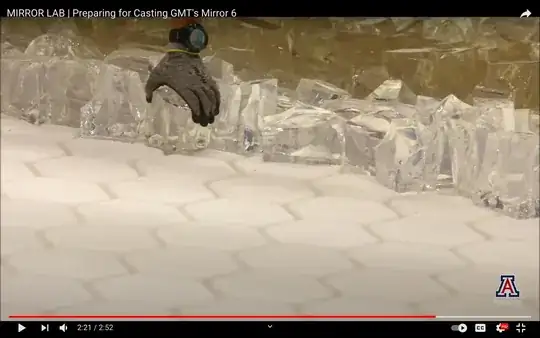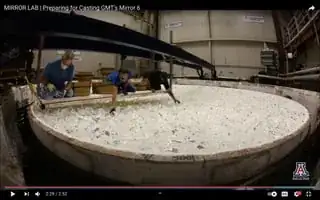The material used for the mirror is indeed E6 Borosilicate manufactured by Ohara corporation as pointed out by @notovny. The fabrication process of a borosilicate glass honeycomb mirror has remained almost unchanged since the first one, an 8.4m LBT mirror, was cast in 1997 (here is the article of the casting). Quoting the article:
E6 is a good match to our process because it is manufactured in appropriate volumes with good quality control, and because the broken surfaces of the chunks melt together smoothly without discontinuities.
This somewhat more modern article (2019) goes deeper into detail:
A significant advantage for our process is that Ohara delivers the glass as blocks broken out of a set of one-ton melts. All surfaces are pristine fracture surfaces which melt together seamlessly in the honeycomb mold, leaving no trace of the original blocks.
And this work from the Arizona University explains further:
...E6 borosilicate glass... is melted in clay pots,..., with vigorous strirring that yields high homogeneity and low striae. It is supplied to us in the form of roughly cubical blocks with smooth, uncontaminated fracture surfaces and weighing typically 4 kg each.
So using pristine chunks of E6 borosilicate seems to greatly reduce the possible contamination (in comparison to using powder or not pristine chunks), seems to melt rather very smoothly and is probably an easy size to transport. The reason of why they use this material is explained in depth in all 3 articles mentioned.







01:14in this video of the 200" Hale telescope mirror cleaning after the aluminum is chemically stripped with nasty chemicals: https://youtu.be/lkBgQaJVKjc?t=70 – uhoh Mar 09 '21 at 23:58